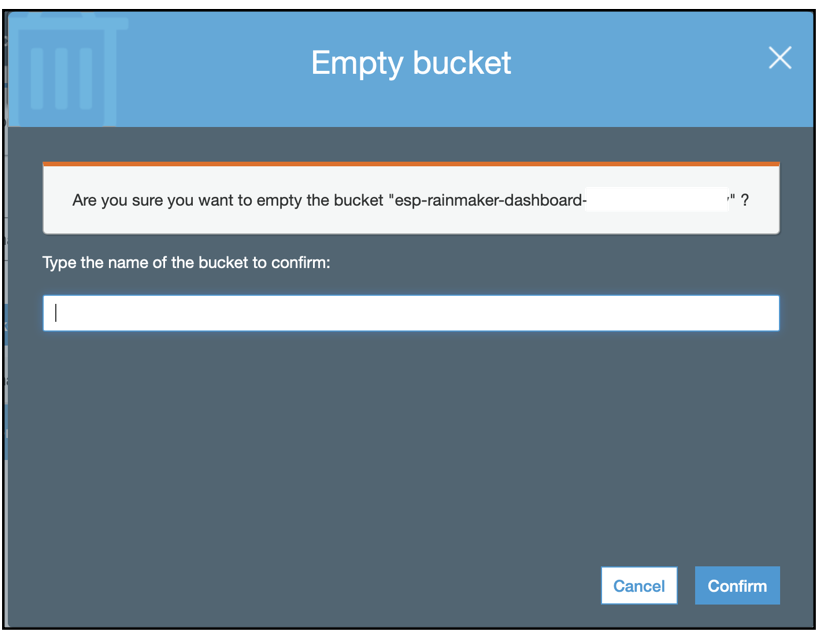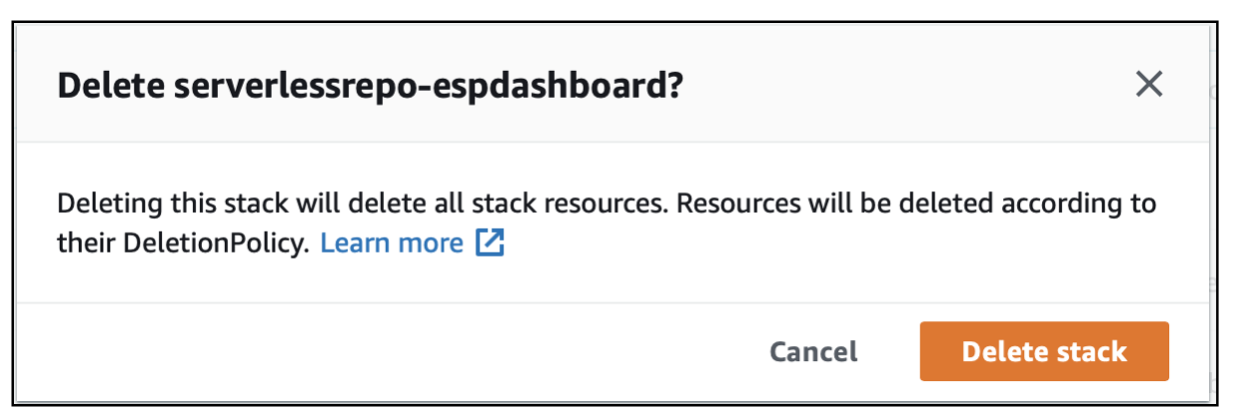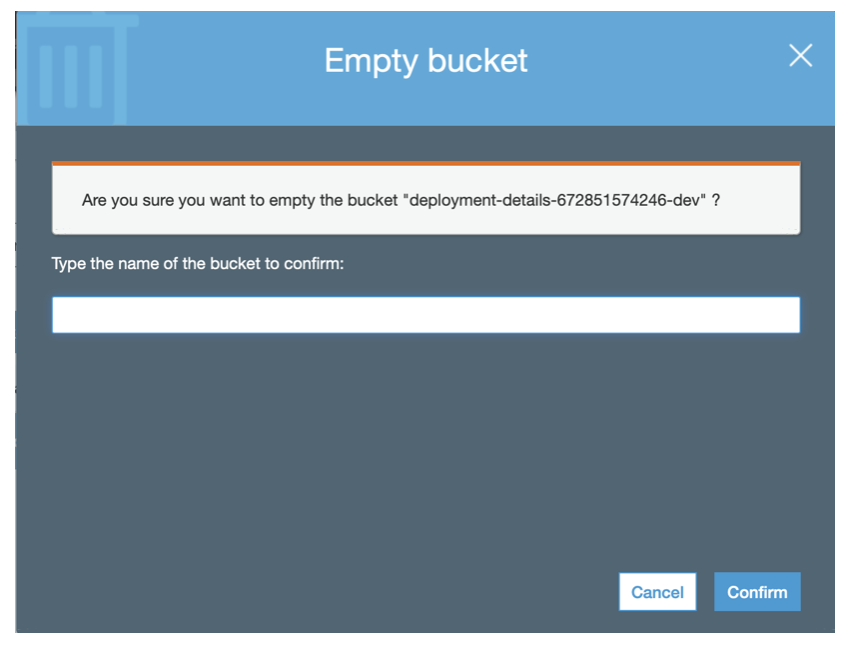Uninstall RainMaker
If you want uninstall the Rainmaker stack, you can refer to this section. Please note that, uninstalling the Rainmaker components will cleanup the resources like database tables, Storage on S3, Cognito User pools and will remove the API Gateway and the Lambda functions.
The Rainmaker frontend and backend components need to be uninstalled separately, the frontend components need to be uninstalled before uninstalling the backend components.
Uninstalling the Rainmaker Front end components
The first step is to empty the S3 bucket ( esp-rainmaker-dashboard- <AWS_ACCOUNT_NO>-
) for the ESP Dashboard Go to AWS Console -> Services -> S3
Search for the S3 bucket - esp-rainmaker-dashboard-<AWS_ACCOUNT_NO>-

- Click on the checkbox before the bucket name and click on "Empty" button.

- Type the name of the bucket to confirm

- To uninstall the Rainmaker frontend components, navigate to the CloudFormation service from the AWS Management Console, as shown below.

- Search for the espdashboard stack in the CloudFormation Stacks.

- Click on Delete button and confirm the delete option on the screen.

- The Delete operation will start

- This operation will take around 5-10 minutes.
Uninstalling the Rainmaker backend components
- First you will need empty the contents of below S3 buckets
deployment-details-<AWS_ACCOUNT_NO>-
Here are the steps to empty the S3 buckets
Go to S3 Service ( AWS Console -> Services -> S3)
Search for the first bucket from the above list.

- Click on the checkbox before the bucket name and click on "Empty" button.

- Type the name of the bucket to confirm.

Repeat the above steps to empty the remaining buckets.
If you are using Cognito custom domain, you will first need to manually remove this domain. The steps to remove this custom domain are mentioned in the Reference section - " Cleaning up the Cognito custom domain "
To uninstall the Rainmaker frontend components, navigate to the CloudFormation service from the AWS Management Console and search for the service "ESP- RainMaker-".

- First stack to be removed is ESP-RainMaker-Core.
- Select the stack "ESP-RainMaker-Core" and click on "Delete" button.
- The delete process will take around 10-15 minutes. After this repository is removed, it will be cleaned up from the CloudFormation stack list.
- Repeat the above steps to remove the ESP-RainMaker-Base and ESP-RainMaker- Base-API repositories.
